2025 Waterproof Flooring: Why It’s Dominating the Market
In 2025, waterproof flooring is redefining the flooring industry as homeowners and businesses alike prioritize durability and convenience. Waterproof floors have shifted from a niche perk to a must-have feature, driven by busy lifestyles, pets, and open floor plans. Industry experts note that "being 100 percent waterproof is an important buy-in for homeowners, second only to color preference." Families want “worry-proof” floors that can handle spills, kids, and pet accidents without damage. This surging demand has propelled resilient flooring – especially luxury vinyl – to record market share in recent years. Waterproof luxury vinyl tile/plank (LVT/LVP) now accounts for roughly one-third of all flooring sales by value as of 2023, a huge leap from barely 4% a decade ago.
Not only do waterproof floors promise peace of mind, but they also deliver on design. Consumers in 2025 are no longer forced to choose between beauty and practicality – today’s waterproof flooring comes in ultra-realistic wood, stone, and tile designs that stay on-trend. As one flooring report notes, luxury vinyl’s ability to mimic natural hardwood and stone while being impervious to water is a key reason it has “attracted a wide range of consumers” and dominated market growth. In short, waterproof flooring is surging because it aligns perfectly with contemporary needs: it’s stylish, low-maintenance, and built for modern life. Below, we delve into the leading materials and technologies behind this trend, the market shifts it’s causing in 2025, and how sustainability factors in – helping you understand why waterproof flooring is front and center this year.
Leading Materials and Technology in Waterproof Flooring
Innovations in materials have been the backbone of the waterproof flooring boom. In 2025, manufacturers are leveraging advanced cores and coatings to make multiple flooring types waterproof. Here are the leading technologies and materials driving this trend:
Rigid Core Vinyl (SPC and WPC): SPC (Stone Plastic Composite) and WPC (Wood Plastic Composite) continue to dominate the market, offering superior water resistance and durability. WPC, with its thicker and more resilient core, is making a comeback for its comfort and sound absorption qualities.
Waterproof Laminate: Long prized for its scratch and wear resistance, laminate flooring historically struggled with moisture. In 2025, new waterproof laminates feature innovative core treatments and coatings, making them a viable choice for high-moisture areas.
Waterproof Engineered Hardwood: Technologies like Woodura® and WetProtect® are making real wood more resistant to water damage, allowing homeowners to enjoy the beauty of natural wood in kitchens and bathrooms.
Hybrid and Next-Gen Cores: Manufacturers are introducing mineral-based composites and PET-based cores that enhance stability and sustainability, reducing reliance on traditional PVC materials.
Market Trends and Demand for Waterproof Flooring in 2025
The rapid adoption of waterproof flooring is dramatically reshaping the flooring market in 2025. Consumer demand has swung decisively toward resilient, waterproof surfaces, driving major shifts in sales across product categories. Over the past decade, resilient flooring (led by LVT) has seen explosive growth, taking significant market share from traditional carpet, wood, and laminate.
Several trends are fueling this momentum:
Lifestyle Factors: Busy households with kids and pets demand waterproof, low-maintenance flooring.
New Construction & Renovation Trends: Builders and remodelers are increasingly choosing LVT for its durability and affordability.
Quality Over Quantity: The influx of low-quality SPC products has prompted a shift toward premium WPC and engineered waterproof solutions.
The Role of Sustainability and Eco-Friendly Innovations
As waterproof flooring becomes ubiquitous, the industry is also tackling its environmental footprint. In 2025, we see key sustainability efforts, including:
PVC-Free & Recycled Materials: Leading brands are developing PVC-free waterproof flooring options, such as PET-based cores and bio-based alternatives.
Sustainable Wood & Laminate: Engineered wood products like Densified Wood are offering water-resistant solutions without plastic additives.
Recycling & Circularity Initiatives: Some manufacturers are introducing take-back programs to recycle old vinyl flooring, moving toward a circular economy.
Should Consumers Invest in Waterproof Flooring?
With all the evidence in view, investing in waterproof flooring in 2025 is an excellent decision for most consumers. Waterproof floors provide superior durability, easy maintenance, and a wide range of stylish designs. The market trends indicate that waterproof flooring will continue to dominate the industry, making it a wise long-term investment.
However, it’s important to choose high-quality products from reputable brands. Investing in premium SPC, WPC, or hybrid waterproof flooring ensures lasting performance. Additionally, eco-conscious buyers can now find sustainable waterproof options that minimize environmental impact.
Ultimately, 2025’s waterproof flooring trend represents a perfect blend of practicality, beauty, and innovation. Whether opting for luxury vinyl planks, waterproof laminate, or engineered wood, homeowners and businesses alike can benefit from flooring that stands up to daily life while enhancing interior aesthetics.
To find the best waterproof floors for your home, contact the Chicagoland specialists at Scharm Floor Covering.
